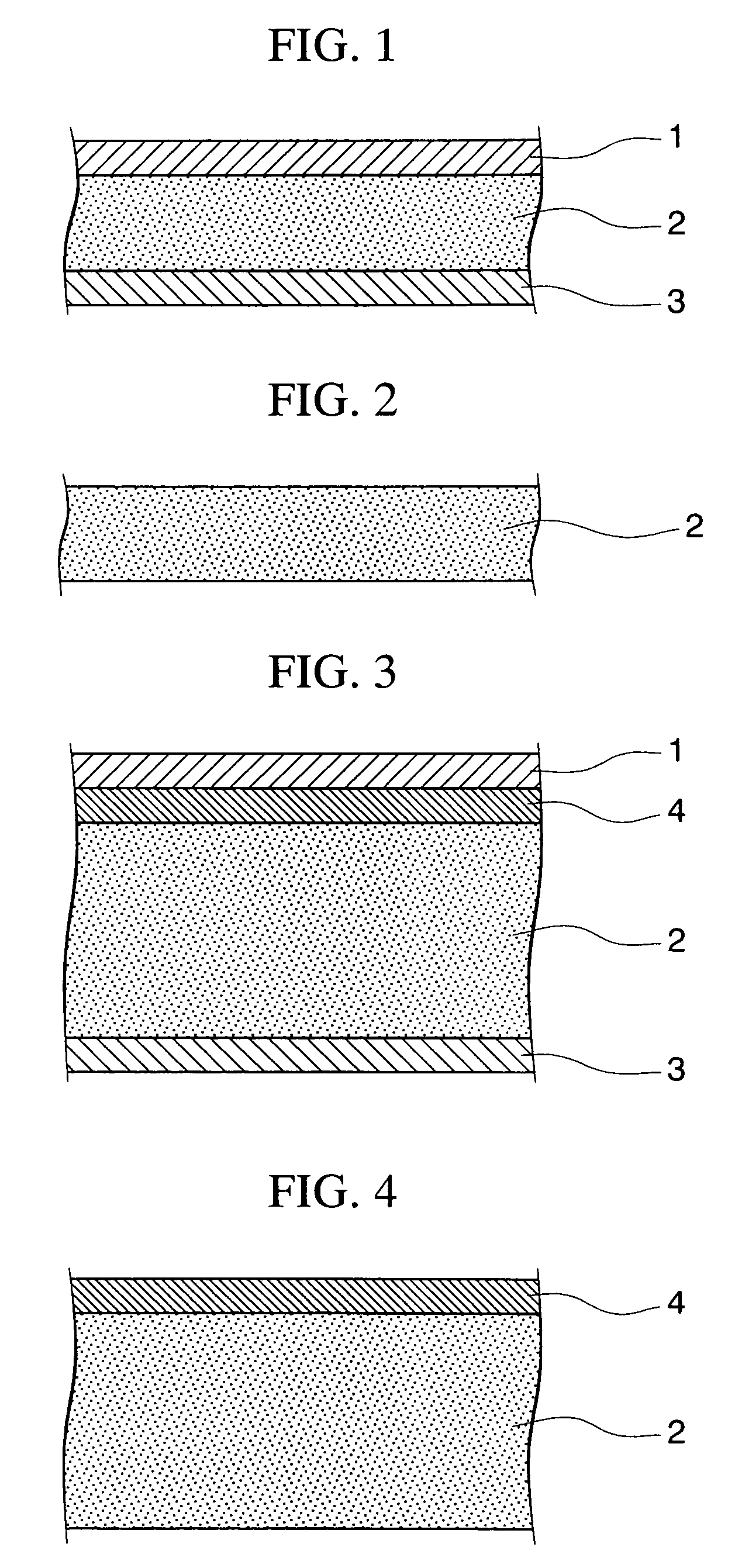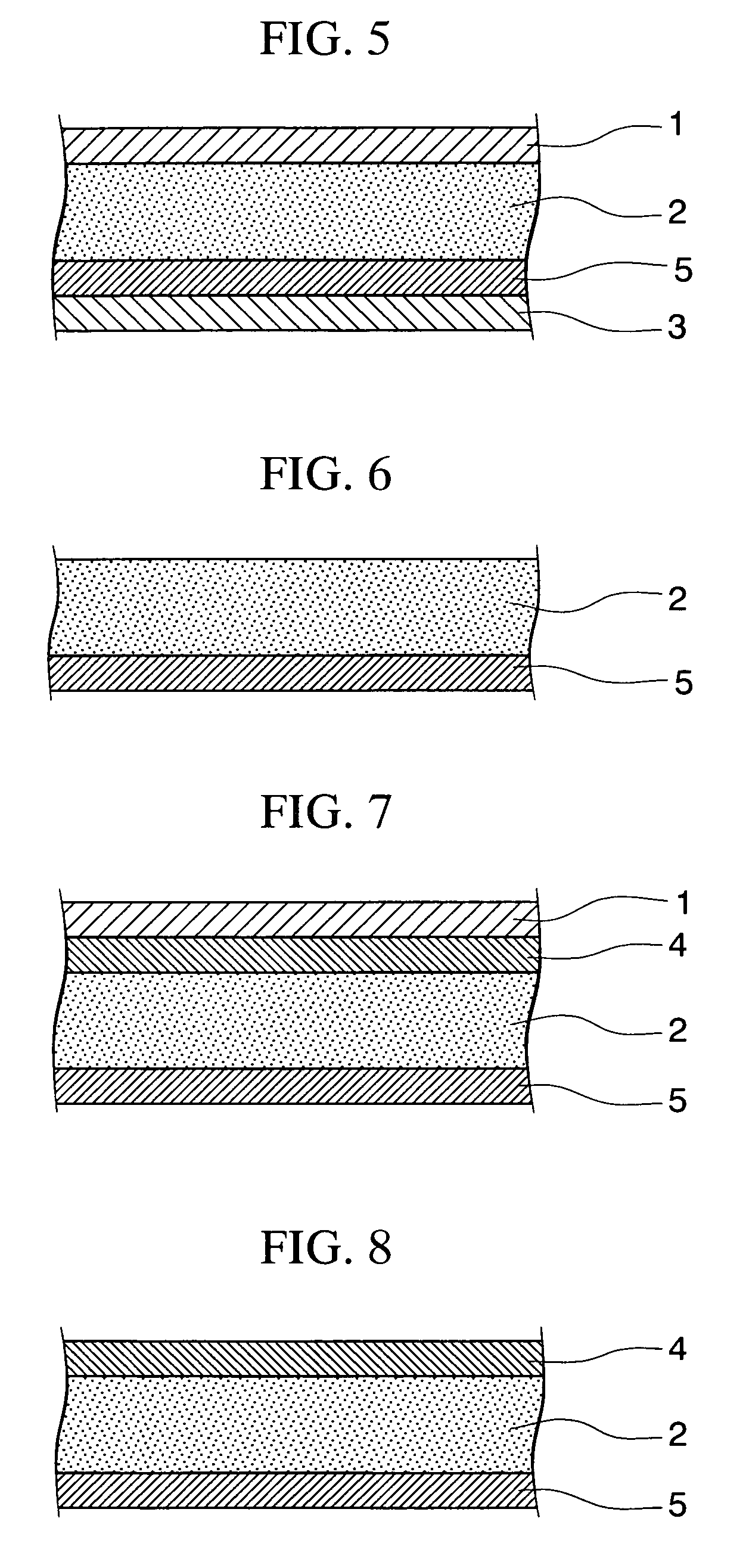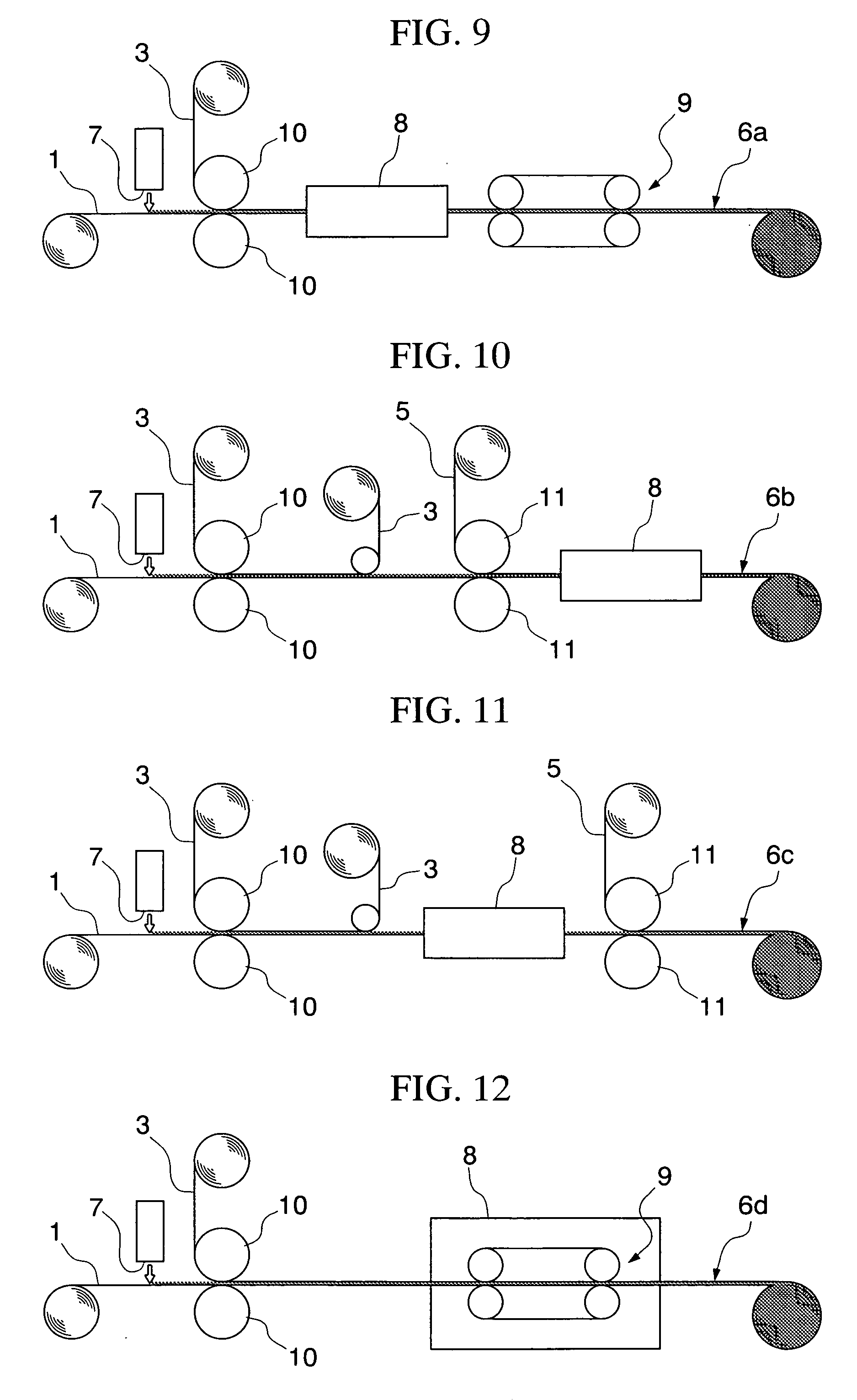Polyurethane foam sheet and process for layered sheet with the same
a polyurethane foam and layered technology, applied in the direction of synthetic resin layered products, transportation and packaging, other domestic articles, etc., can solve the problems of evaporation of organic solvent, environmental pollution, and continual prohibition of production and use, and achieve the effect of reducing energy consumption and easy control
- Summary
- Abstract
- Description
- Claims
- Application Information
AI Technical Summary
Benefits of technology
Problems solved by technology
Method used
Image
Examples
example 1
[0186] Production of a Foam Sheet I
[0187] A 1 liter four neck flask was charged with 70 parts of a polytetramethylene glycol (hereafter abbreviated as PTMG) with a number average molecular weight of 1300, and 30 parts of a polyester polyol with a number average molecular weight of 2000, produced by reacting adipic acid (abbreviated as AA in Table 1) and hexanediol (abbreviated as HG in Table 1), and the mixture was heated under reduced pressure at 120° C., and dewatered until the moisture content had fallen to 0.05%. Following cooling to 60° C., 25 parts of 4,4′-diphenylmethane diisocyanate (MDI) was added, the temperature was raised to 110° C., and the mixture was reacted for 2 hours until the isocyanate group content became constant, thus yielding a urethane prepolymer I.
[0188] The melt viscosity of the urethane prepolymer I at 125° C. was 8000 mPa.s, and the isocyanate group content was 2.1% by weight. The urethane prepolymer I was heated to 120° C., and was then mixed with eth...
example 2
[0191] Production of a Foam Sheet II
[0192] The liquid mixture I obtained in the example 1 was immediately introduced into the space between a first release paper and a second release paper set in a roll coater device, and following application of a sheet-like coating of the liquid mixture of thickness 100 μm, water vapor was spray misted onto both the first and second release papers for 1 minute, under conditions that included a temperature of 80° C. and a relative humidity of 95% in the vicinity of the surfaces of the release papers. The structure was then allowed to stand for 1 day in an atmosphere at 23° C. and a relative humidity of 65%, thus yielding a foam sheet II.
[0193] The results of evaluating the characteristics of the foam sheet II are shown in Table 1. The foam sheet II exhibited favorable foaming characteristics, with a foaming degree of 2.5, and also displayed excellent levels of heat resistance and resistance to hydrolysis. Furthermore, the sheet suffered no foam c...
example 3
[0194] Production of a Foam Sheet III
[0195] The liquid mixture I obtained in the example 1 was immediately introduced into the space between a first release paper and a second release paper set in a roll coater device, and following application of a sheet-like coating of the liquid mixture of thickness 300 μm, water vapor was spray misted onto both the first and second release papers for 1 minute, under conditions that included a temperature of 80° C. and a relative humidity of 95% in the vicinity of the surfaces of the release papers. The structure was then allowed to stand for 1 day in an atmosphere at 23° C. and a relative humidity of 65%, thus yielding a foam sheet III.
[0196] The results of evaluating the characteristics of the foam sheet III are shown in Table 1. The foam sheet III exhibited favorable foaming characteristics, with a foaming degree of 2.5, and also displayed excellent levels of heat resistance and resistance to hydrolysis. Furthermore, the sheet suffered no fo...
PUM
| Property | Measurement | Unit |
|---|---|---|
| melt viscosity | aaaaa | aaaaa |
| thickness | aaaaa | aaaaa |
| thickness | aaaaa | aaaaa |
Abstract
Description
Claims
Application Information
 Login to View More
Login to View More - R&D
- Intellectual Property
- Life Sciences
- Materials
- Tech Scout
- Unparalleled Data Quality
- Higher Quality Content
- 60% Fewer Hallucinations
Browse by: Latest US Patents, China's latest patents, Technical Efficacy Thesaurus, Application Domain, Technology Topic, Popular Technical Reports.
© 2025 PatSnap. All rights reserved.Legal|Privacy policy|Modern Slavery Act Transparency Statement|Sitemap|About US| Contact US: help@patsnap.com



